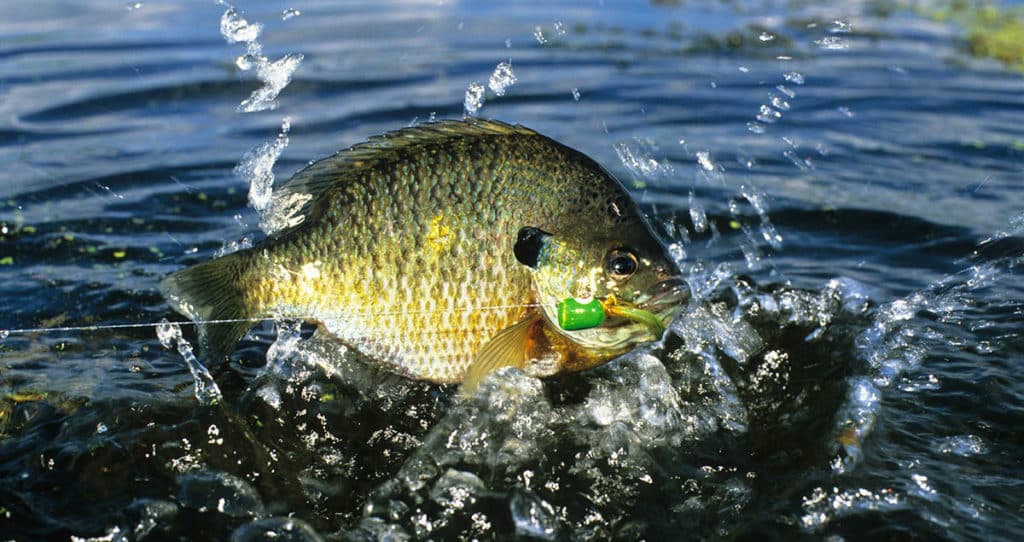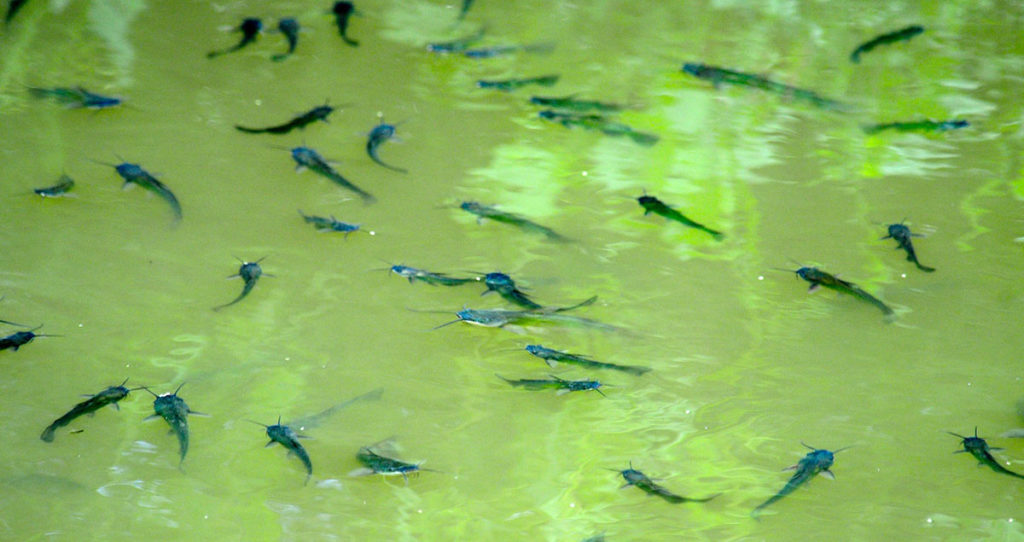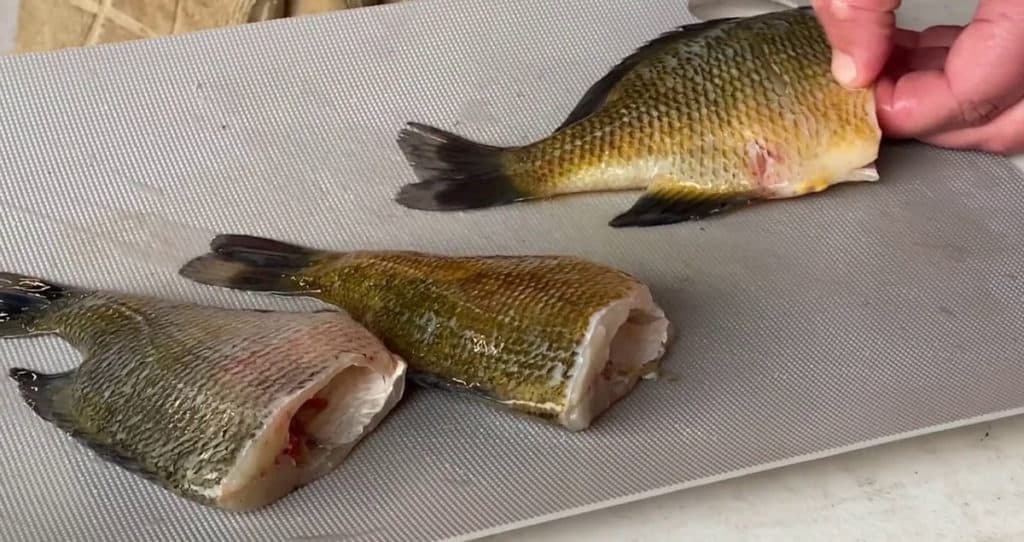River fishing for catfish can be an exciting and rewarding experience, but to increase your chances of success, you need the right rig. Whether you’re a seasoned angler or just starting out, finding the perfect setup can make all the difference. In this article, we’ll share with you the top catfish rigs for river fishing that will take your catch to the next level.
Types of Catfish Rigs for River Fishing
Depending on where you’re fishing and how you’re fishing for catfish, you’ll find over a dozen different types of rigs and setups that people use. Here are some of the best to use in moving water.
1. Carolina Rig
The Carolina Rig is a simple and versatile rig. It consists of a weight, swivel, leader as well as a hook. The hook is placed at the bottom of the line, and the hook is tied to the leader several feet above it. This allows the bait to float above the bottom and attract catfish.
Many anglers choose to use Carolina Rigs when they’re fishing in slow current around some sort of structure. Whether it’s a snag or a large boulder, Carolina Rigs are created to be able to slowly drift around the structure into fishy areas. Carolina Rigs will naturally work their way around the structure, and it won’t take much for a catfish to want to come out and strike it.
Some anglers choose to use live baits like minnows and others will use cut pieces of carp, sucker, chicken, liver, or just about any other meat you can find. Stick to the slower currents and heavy cover, and you’ll have plenty of success in landing catfish.
How to Setup the Carolina Rig
- Attach a sliding sinker to your main line (25-50 lb mono).
- Tie a swivel to the end of the line.
- Attach a leader to the other end of the swivel (40-50 lb mono).
- Tie a hook to the end of the leader (2/0 or 3/0).
- Attach your bait (live minnow or cut bait)
Depending on the type of angler you are, you’ll find that surgeon’s knots as well as fisherman’s knots are some of your best choices when setting up your Carolina rig. Also, make sure you’re aware of the size of the catfish that you may land! You may need to adjust the size and type of your line accordingly.
How to Fish the Carolina Rig
When you’re fishing with the Carolina Rig, look to use it in slack water near some heavier structure. To cast it, make sure you stay slow and don’t feel the need to aggressively flick your wrist. If you do, the rig will get tangled. Aim your cast 10-15 feet upstream of where you’d like your bait to be. When you get a bite, you’ll notice a few hard jerks on your rod tip, and you know the fish has it.
2. Slip Bobber Rig
This rig is used for fishing in shallow water or for suspending bait at a specific depth. It consists of a bobber, weight, and hook with the bait tied to the hook. The weight can be adjusted to set the depth at which the bait will be suspended.
Anglers will use slip bobber rigs when they want their bait to drift at a consistent depth and rate. These rigs generally snag less than most other rigs since you can set the depth and keep it there. You can fish this rig in fast or slow-moving currents wherever you think the fish may be sitting.
Catfish generally like to sit in areas where they have easy access to structure and slow-moving water, so keep that in mind.
Setting Up the Slip Bobber Rig
- Attach a bobber stop to your main line (25-50 lb mono). Some anglers will do a five-turn Uni-knot with the same size line they’re using to create their bobber stop. This will create an adjustable bobber stop to help you more easily set the depth. If you move it up the line, your bait will go deeper and if you move it down the line, the bait will float shallower.
- Slide a bobber onto the line, above the bobber stop.
- Attach a size (2/0 or 3/0) hook to the end of the line below the bobber.
- Bait the hook with your minnow or cut bait.
- Adjust the stop to ensure your bait will stay at the desired depth.
How to Fish the Slip Bobber Rig
Slip bobber rigs are also great rigs to use in more shallow water. If you’re hoping to get your bait into shallow and slower-moving water, cast upstream of the desired strike zone. Your bait will stay at the same depth, and naturally work itself into the area you determine to be the strike zone. Similar to the Carolina Rig, you want to make a smooth cast. A lot can go wrong if you cast too aggressively, so keep things smooth.
You’ll see the bobber quickly drop below the surface when you’re getting a bite.
3. Bottom Bouncer Rig
The bottom bouncer rig is used for fishing in deeper water and has a weight that bounces along the bottom to attract catfish. The rig consists of a weight, swivel, leader, and hook, with the bait attached to the hook.
If the current at the surface is moving fast, but you know things slow down towards the bottom of the water column, use a bottom bouncer rig. The weight will prevent the rig from moving extremely quickly downriver, so the catfish will have an easy time picking up your bait whenever they become hungry. The bottom bouncer works extremely well in big and deep water.
Setting Up a Bottom Bouncer Rig
- Attach a bottom bouncer weight (egg shape, 2 oz or 3 oz) to the main line using a swivel
- Tie a leader (25-40 lb mono) to the other end of the swivel
- Attach a hook (2/0 or 3/0) to the end of the leader
- Add a snap weight or inline weight to the main line in front of the bottom bouncer to help get the bait down to the desired depth
Bottom bouncer rigs need to be heavy enough to get to the bottom of the water column. You may need to up the weight size if you’re fishing, especially fast water.
How to Fish the Bottom Bouncer Rig
Bottom bouncer rigs are a bit more difficult to place because you are generally going to be fishing in fast and deep water. As long as you have a general idea of where you want your bait to land, you can cast to it and let your weight and rig do the rest.
With these rigs, you’re going to have to cast aggressively, so feel free to give it all the torque you need. The rig is set up, so it won’t get too tangled with your quick movements.
Bottom bouncer rigs are a bit tougher to detect strikes on, so make sure you pay close attention to your rod tip. A few quick tugs will let you know a fish has it.
4. Three-Way Rig
The three-way rig is used for fishing in areas with strong currents because it allows the bait to drift naturally with the current. This rig consists of a weight, swivel, leader, and hook, with the weight attached to the main line, the leader tied to the swivel, and the hook tied to the leader.
Anglers will fish with these rigs below dams and some of the large rivers across the United States. The large weight will find itself bouncing along the rocks and it may even get hung up in especially structure-heavy areas. Don’t worry because if you tie a light line between the swivel and your weight, a fish that picks it up could break the line attached to the weight and still let you fight it without losing the fish.
Setting Up the Three-Way Rig
- Attach a sinker (1oz to 3oz) to the main line using a swivel
- Tie a short leader line (6lb or 8lb test) to one end of the swivel.
- Tie another leader line, longer than the first, to the other end of the swivel (15-30 lb test).
- Attach a hook (size 2/0 or 3/0) to the end of the longer leader line.
Three-way rigs are some of the most useful rigs when fishing for catfish. Make sure you use a lighter leader for the line you’re attaching to the weight in case it gets hung up in rocks or trees.
How to Fish the Three-Way Rig
Three-way rigs are some of the most versatile options for your catfishing adventures. You can toss these in heavy currents or in slack water. The point of these rigs is to keep your bait in areas that it otherwise wouldn’t be able to hold.
For example, if you fish below a dam in a rocky area, the weight will hold you in the current and allow those big catfish that are holding on the bottom to find your bait. Catfish are known to aggressively grab bait, so it could snap off the weight if it’s hung up tight enough.
Similar to bottom bouncers, paying attention to your rod tip is going to tell you that a fish has your bait.
5. Jug Line Rig
The jug line rig is a simple and classic rig that has been used in catfishing for years. Many anglers choose to use it when they’re fishing in large, wide sections of the river. It consists of a plastic jug with a line and hook attached. The bait is tied to the hook, and the jug is placed in the water to float freely.
If you’re fishing a wide section of river with minimal current, then the jug line is the ideal option. You’re going to need a boot of some sort to get the jug lines where you would want them, so you don’t want to be going after them in especially heavy current because they could float miles downriver by the time you check on them.
Setting Up the Jug Line Rig
- Take a plastic jug and fill it with air.
- Attach 20-30 feet of line to the handle of the jug.
- Attach a hook (2/0 or 3/0) to the end of the fishing line.
- Bait the hook (minnow or cut bait) in the water, and allow the jug to float.
When a fish takes the bait, the jug will begin to move faster or slower than the current.
How to Fish the Jug Line Rig
Jug-line rigs are fairly straightforward. You can drop the rig wherever you would like in the river (generally near a structure and in extremely slack water) and let it be. Let your jugs sit for a few hours or overnight and return to check on them the next day.
When fish take your jugs, they’ll begin to move in a more unconventional way. To set the hook, you’ll use a similar method to an ice fishing tip-up. Grab the line with a quick jerk and reel it in with your hands.
Summary
In conclusion, finding the right rig for river catfishing can make all the difference in your success as an angler. The Carolina rig, slip bobber rig, bottom bouncer rig, three-way rig, and jug line rig are all great options to consider.
Experiment with the different rigs and techniques to find what works best for you and the conditions of the river where you’re fishing. Keep in mind that fishing should be fun, so don’t be afraid to try something new or tweak your setup until you find what works best. With the right rig and a little patience, you’re sure to reel in a trophy catfish in no time!


![Which Fish Eat Bluegill, Sunfish, and Other Bream? [Answered]](https://huntfishsouth.com/wp-content/uploads/2022/12/bass-eats-bluegill-1024x542.jpg)




